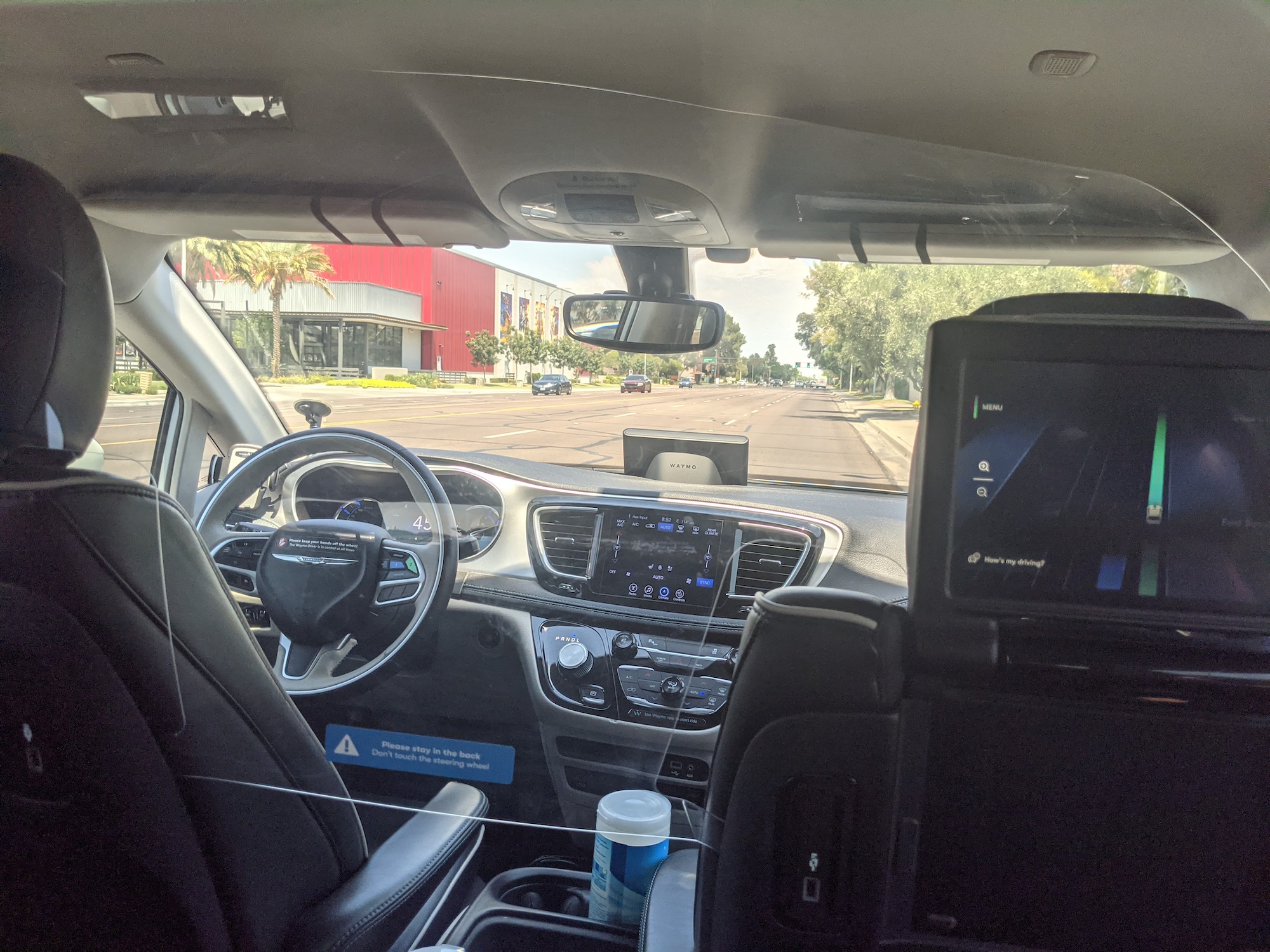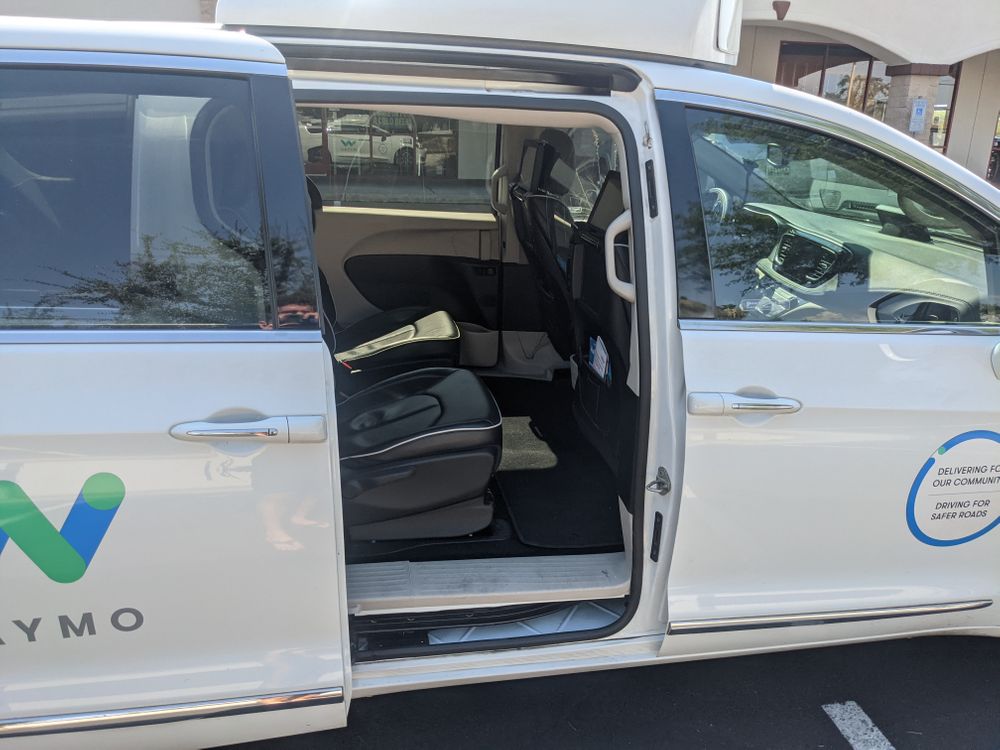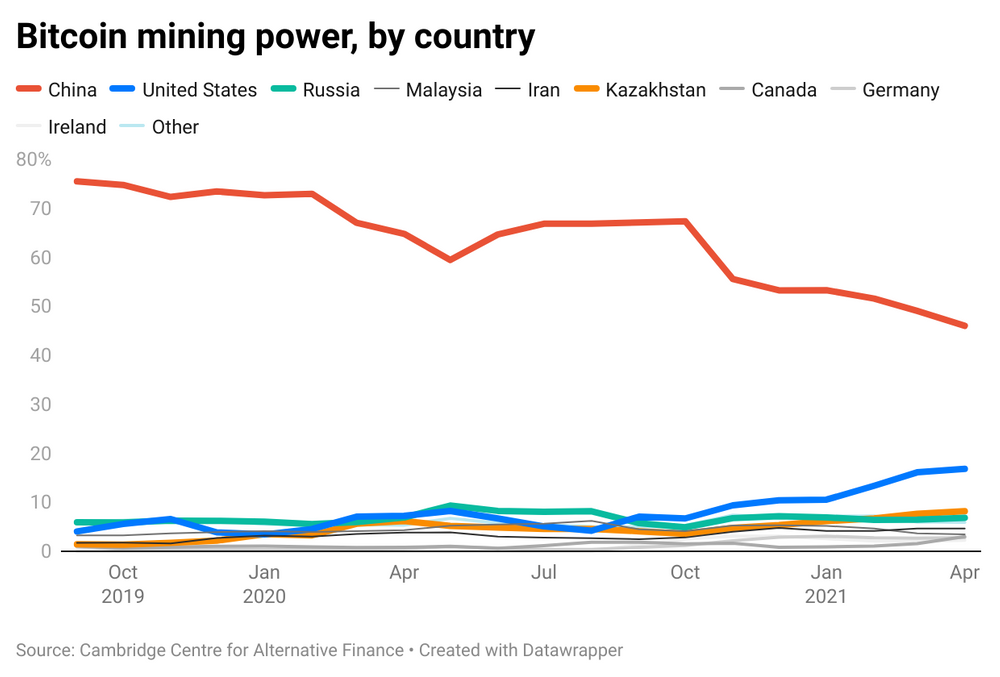|
Happy Friday. A few weeks ago, we sent our very own Ryan Duffy to Phoenix, AZ, to ride around in Waymo’s publicly available, fully driverless robotaxis.
Today, we’re publishing the first report from his trip. If you’ve ever wondered what it’s like to take a completely driverless car from point A to point B, Ryan's got you covered. His story has it all—a review of Waymo’s app, Ryan’s feelings on self-driving safety, an interview with a robotaxi aficionado, and...a forgotten bear mask.
In today’s edition:
 We rode Waymos We rode Waymos
🛰 Amazon's space internet plans
—Ryan Duffy, Jordan McDonald
|
|
AV
Where the wild Waymos are
|
Ryan Duffy
|
Waymo first opened Waymo One, its driverless ride-hailing service, to the general public last October. Today, its Arizona fleet of Chrysler Pacifica minivans numbers in the hundreds. The service runs 24/7 across a 50-square-mile swath of suburban Phoenix (an area slightly larger than San Francisco).
Few Waymo riders have publicly documented the experience for the world to see.
With a plan to rectify that through email newsletters, I (Ryan) touched down in Phoenix Sky Harbor in late June. The rules of engagement:
- Don’t prearrange rides with Waymo.
- Book directly through the public-facing app to ensure all of our rides were driverless.
Most rides were smooth and unremarkable, with the notable exception that...no one was ever behind the steering wheel. You can skip to the full version here, or keep scrolling for the spark notes.
So, you’ve entrusted your life to a machine
Now what?
The wheel comes alive: Waymo Driver creeps to life in a parking lot or on neighborhood streets. If the vehicle has to navigate a crowded parking lot in peak hours, it proceeds more cautiously. Coming in, I expected the vehicle to treat the gas pedal like a driving school student would. It did not, and confidently accelerated to 45 mph.
Sharing the road: Driver basically moves with the ebbs and flows of surrounding traffic. It won’t tailgate, nor will it maintain seven car lengths of distance. The system plans longer routes to avoid difficult situations.
Maneuverability: Driver can weave between lanes just fine, but doesn’t do so unnecessarily. I was very impressed by the vehicles’ ability to take unprotected left turns (i.e., without a green arrow).
The question on all your minds is whether the experience feels safe. The answer, in my view, is a resounding yes. Riding with Driver takes on a sense of normalcy, and eventually, I daresay, it gets a bit boring.
-
In October 2020, Waymo published a safety report analyzing 6.1 million miles of autonomous driving data from Phoenix. The report dissects 47 “contact events,” 18 of which occurred IRL and 29 that happened in simulation. Most were rear-fender benders.

Ryan Duffy
But Driver ain’t infallible
I bore witness to occasional erratic driving behavior.
To wit, the top example: My Arizona trip was right before July 4. In some parking lots, fireworks vendors had erected tents with a perimeter of traffic cones surrounding them.
During one ride, Driver had to pass through an ultra-narrow berth between a fireworks stand and the curb. The car laid on the brakes after inching toward the slot. The fireworks vendor manning the stand, named Austin, stood up, approached the car, and watched curiously. After a few seconds, the car glided through the ~7.5-foot space without incident.
Afterward, Austin told me he was surprised by how well the van negotiated the scenario—I was too. For a fleeting moment, I thought Driver would have to phone home for help. Or be forced to put it in reverse, extricate itself from the situation, and find a new drop-off. But across all ten trips, I never got stuck and Driver didn’t have to pull over.
Looking ahead: Can autonomous driving be safely and cost-effectively generalized beyond suburban Phoenix?
Plenty of engineers, executives, and investors still believe the answer is yes, though it’s impossible to say whether full-feature Level 5 autonomy is solvable. But the minimum viable product exists today, in the form of Waymo One’s AZ-based Level 4 cars.
Click here to read the full piece.—RD
|
|
|
Well...actually it’s an ad for Bakkt, the digital wallet of the future. But that’s what Bakkt gives you: freedom.
No, we’re not about to break into a patriotic anthem or make references to an alien invasion movie about independence. We’re here to talk about the freedom to use your digital assets how you want—by managing, sending, or spending them.
With Bakkt, you can store all your digital assets in the same place. That includes:
- Loyalty and rewards points
- Bitcoin
- Digital and physical gift cards
You can even spend at your favorite retailers with the Bakkt Card, which can be used online or wherever Apple Pay or Google Pay are accepted.
The folks at Bakkt believe trading crypto should be easy, secure, and cost-effective, so there are no transaction or trading fees when you buy and sell bitcoin on the app.
The Fourth may have passed, but you can keep celebrating freedom with Bakkt here.
|
|
|
Pixabay
|
Those of us who shop at Facebook are likely to simply use its Marketplace function. Amazon, meanwhile, looks at its org chart.
Amazon absorbed Facebook’s satellite broadband division in a bid to improve its own space task force, per The Information. The 12+ employees are tasked with building out Amazon’s low-earth orbit (LEO) satellite program, which includes its space broadband initiative, Project Kuiper.
- Facebook offloaded the team to Amazon after a seven-year effort to build its own satellite-based internet service, which it’s now giving up on.
Reaching for the stars: The commercial market for LEO satellites is already worth an estimated $4.1 billion, per Fortune Business Insights. Amazon’s Project Kuiper received FCC approval in July 2020 to launch and operate 3,236 satellites, but it has yet to send one into the sky. The company plans to spend $10 billion on the project.
With its competition very literally out of this world, Amazon is trying to catch up. It’ll have to contend with SpaceX’s Starlink, which has dominated the space satellite market.
The Elon Musk-led space company has launched 1,800 satellites into low-earth orbit since 2019, has...69,420...customers, and is aiming for worldwide coverage (except for polar regions) by August 2021.—JM
|
|
|
Dan McCarthy
|
Stat: Even before China cracked down on bitcoin mining in June, its share of global bitcoin mining power had plummeted—as of April 2021, China’s share of the global hash rate was at 46%, down from 76% in 2019.
Quote: “Companies of the Binance Group are not authorized to provide investment services and activities in Italy."—CONSOB, Italy’s financial regulator, as it joined a wave of other governments scrutinizing Binance
Read: How lawyers embraced the robots.
Together at last: The revenue event of the summer, Gong #celebrate, is comin’ in hot on July 21. Some of the biggest names in business will be spilling the tea on trends and tactics shaping the revenue industry. Save your seat here.*
*This is sponsored advertising content
|
|
|
|
The 5G revolution is here. It’s a catalyst of digital connectivity and innovation—but what does it mean for your industry? On this episode of The Element, chief technologists and industry experts discuss the myths and facts of 5G and the businesses that will benefit most from its impact. Have a listen here.
|
|
-
TSMC expects the auto chip shortage to ease this quarter. The world’s largest contract chipmaker is also considering building a new plant in Japan.
-
Aurora, the autonomous vehicle startup that bought Uber’s AV division, is SPACing at an $11 billion valuation.
-
Netflix is officially entering the cloud gaming wars.
-
Walmart is bringing new robots to 25 distribution centers.
-
Demand for VR and AR headsets nearly tripled year over year in Q1 2021.
-
“SF is dead” narratives may have been overblown.
|
|
|
Santiago Urquijo/Getty Images
|
This Wednesday, the European Union proposed a more specific and aggressive climate plan than other major polluters (e.g., the US, China) have offered. It’ll take a few years for a version of it to become law.
The tech angle: The EU proposal would eliminate the sale of new gas- and diesel-powered cars by 2035. To meet that goal, the EV industry would have to significantly ramp up production over the next 14 years.
There are nearly 16 million new passenger vehicles sold in the EU each year, but 2020 saw only 2.3 million electric vehicles sold worldwide.
|
|
|
Three of the following news stories are true, and one...we made up. Can you spot the odd one out?
|
|
|
Catch up on the top Emerging Tech Brew stories from the past few editions:
|
|
|
Enjoying the newsletter? Share it with your network to take advantage of our rewards program.
When you reach 5 referrals, we'll send you this Morning Brew sticker sheet.

Hit the button below to learn more and access your rewards hub.
Click to ShareOr copy & paste your referral link to others:
morningbrew.com/emerging-tech/r/?kid=303a04a9
|
|
|
Sorry, you'll have to manually grill your hot dogs for now.
|
|
|










